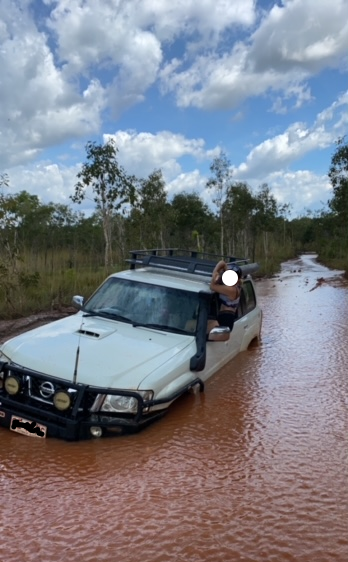

Water Crossing Gone Bad
Water crossing gone wrong! You have decided to go for it, it doesn’t look too deep, you are in a 4x4, done similar crossings before, so what could go wrong? Well lots of things really, or maybe nothing. As mentioned in other blogs on our website, it generally depends on a number of factors. For example, how deep is the water, is it flowing or still, what is the surface of the road/track like, are there likely to be washouts, rocks or submerged branches, how long is the crossing, where is you car’s air intake located etc.
Another important factor is driver experience and whether your car is a manual or an auto. By this I am simply meaning that you will generally not stall an auto, whereas if you suddenly get caught unaware by something in the water or you get bogged, you may actually stall the manual car and then you will be sitting there stuck in the water.

Of all the things that will happen in this situation such as water will likely come into your car through the door seals (generally they are not waterproof when stopped in water), and possibly your exhaust pipe may also totally fill up with water. This can be a major problem for you as the car will not want to start if this has happened. You will need to be towed out of the water, raise the front of the vehicle and drain out the water, at least from the pipework if not fully from the muffler. Exhaust gasses need to escape from the engine for the car to function normally. Hopefully no water has entered the engine or the air filter box as this can also be a major problem for your car and cause major damage. Check out driving courses
Anything that you have on the floor of the car will get saturated as will all the carpets and sound proofing underlay which can take an enormous amount of time to get dry again. The siltier the water the more “mud” will get into you car and this can also mean you are driving around in a really smelly car for the next few months, certainly during the wet season when the humidity is high. Tool bags, clothing, food and your phone will also not like getting wet so all of these items will need to be on the seat rather than the floor.
Another safety issue to consider is how can I get out of my car if I do get stuck in deeper water. It is a good idea to have your windows open in case the electrics short out. Don’t wear your seat belt when crossing flowing water in case you get washed off the crossing as you can get caught up in the seat belt and may not be able to get free.
So how do we avoid this situation then? Have a good think about the water crossing before you drive into it. Check out how deep it is, try and get an understanding of the likely hidden dangers under the water if you can and make sure that you are in 4x4 low range if on the dirt. Other vehicles entry or exit tracks can assist us in determining if someone has crossed recently. Although there can be a level of “local” knowledge that we are not aware of so caution is advised at all times to avoid your car getting stuck and your feet getting wet!
Handy tip: it may also pay to get your diff oils changed, the fuel filter replaced, the water trap checked, air filter and transmission fluids looked at or replaced either by yourself or by a mechanic. Water can get in through the breather valves and cause problems for you later on.